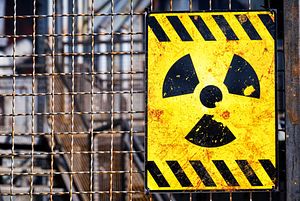Just how well are India and Pakistan, South Asia’s two nuclear-armed rivals, taking care of their nuclear materials? The Nuclear Threat Initiative’s (NTI) 2016 Nuclear Security Index ranks 24 countries that possess “one kilogram or more of weapons-usable nuclear materials” across a range of indicators of nuclear security–both India and Pakistan fall into this category.
The index also measures security indicators for an additional 152 countries that possess zero or less than one kilogram of fissile nuclear materials. I covered the 2014 NTI index for The Diplomat, commenting on India’s low ranking, which placed it below both China and Pakistan for nuclear materials security.
In the 2016 iteration of the index, there’s good news for India. Notably, its ranking on nuclear materials security is improved, placing it one rank ahead of Pakistan on the ranking of indicators affecting the likelihood of nuclear materials being stolen. India comes in at 21 out of 24, while Pakistan is ranked 22 (Iran and North Korea fill out the bottom of that ranking).
Both South Asian nuclear powers receive a comparable aggregate score across the relevant indicators, which include the quantities and sites where nuclear materials are stored, their security and control measures, adherence to global norms, domestic commitments and capacity, and their risk environments.
Notably, India outperforms Pakistan on the global norms measure but lags behind Pakistan on the measure for domestic commitments and capacity. This reflects a feature of Indian nuclear security that I’d commented on in my report on the 2014 NTI index. Notably, Indian regulations for nuclear sites are written as guidance rather than as binding requirements. Additionally, India lacks an independent regulatory agency though it has pledged to establish one.
The 2016 country profile for India in the NTI index states that India’s improved ranking is due to its participation “in bilateral assistance activities with the United States and putting in place the [International Atomic Energy Agency’s (IAEA)] Additional Protocol.” The NTI index expresses concerns about India’s lack of attention to the issue of “insider threats,” an issue that was highlighted in a recent Foreign Policy article.
Meanwhile, the NTI index scores for Pakistan across are also discouraging. Pakistan is often cited as one of the more dangerous countries in the world given its growing nuclear arsenal, investment into low-yield battlefield nuclear weapons, and unstable internal environment. The NTI index reflects these realities, but acknowledges that Pakistan’s domestic commitments and capacity to prevent the theft of nuclear materials are fairly good in the region.
Though Islamabad comes well behind in the rankings for its domestic nuclear security commitments, it manages to outrank India, China, Israel, Iran, and North Korea. Unlike India, it has an independent regulatory agency and robust domestic nuclear materials security legislation in place. Pakistan, however, has not implemented the IAEA Additional Protocol. Additionally, it’s political instability and lack of effective governance also set it behind. The NTI index country profile adds that the “presence of groups interested in and capable of illicitly acquiring nuclear materials” also adversely affects Pakistan’s score.
Though India may have surpassed Pakistan in the 2016 NTI index, the overall picture of nuclear security between the two nuclear armed South Asian giants is not reassuring. Both India and Pakistan remain outside of the Nuclear Non-Proliferation Treaty and Comprehensive Nuclear-Test-Ban Treaty, and regularly rattle sabers over the disputed territory of Kashmir, among other issues.
South Asia remains the most likely region for the first post-Second World War use of nuclear weapons. Even if the risk of state conflict is reduced, however, the possibility of fissile materials falling into the hands of non-state actors with malicious intent is not a distant threat, as the NTI’s 2016 index attests.

































